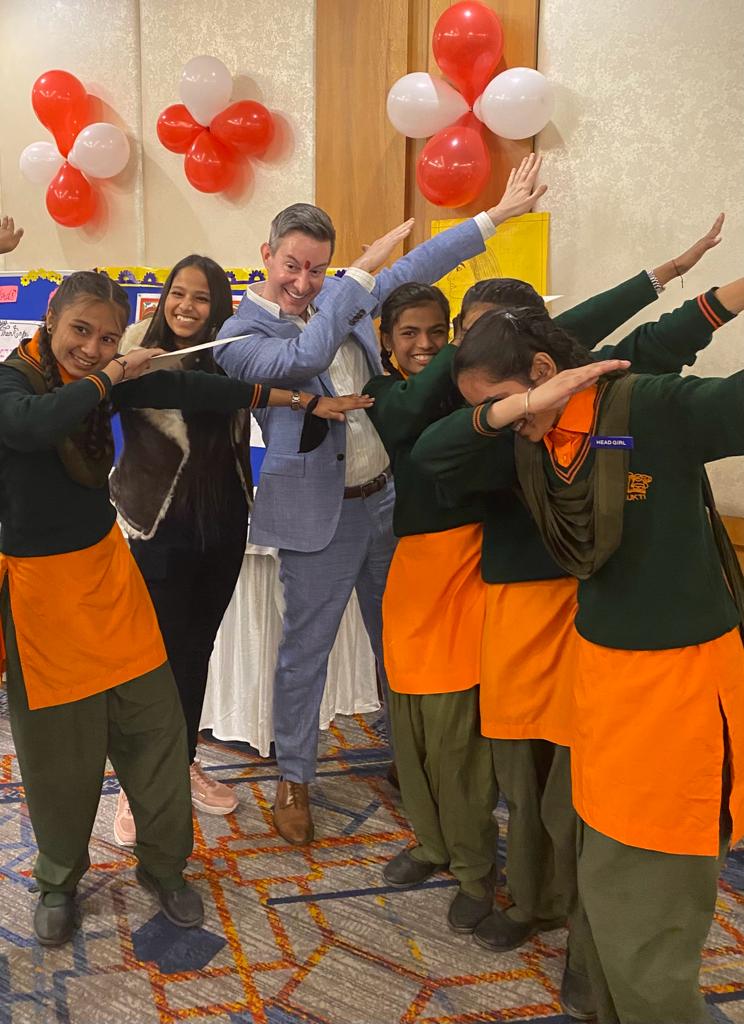Anthony Miranda talks about the cultural ties between India and the U.S., day-to-day functioning of the American Center and the role played by it in further boosting cultural ties.
Anthony Miranda, the U.S. Cultural and Educational Affairs Counselor, is leading the U.S. Mission’s public engagement strategies and programming. Overseas, he has served in Munich, Germany; Kabul, Afghanistan; Sofia, Bulgaria; and Madrid, Spain. Domestically, he has served at the U.S. Mission to the United Nations in New York City and in Washington in the Executive Secretariat and in the Bureaus of Western Hemisphere and Intelligence & Research. Prior to joining State, he practiced law in Washington, DC. A first-generation American, he hails from Miami, FL.
In this interview, Anthony Miranda talks about the cultural ties between India and the U.S., day-to-day functioning of the American Center and the role played by it in further boosting the cultural ties, opportunities to increase collaboration in the field of filmmaking, scholarships on offer, and food diplomacy in the context of India and U.S., among others things.
Excerpts
Q. How do you look at the cultural ties between India and the U.S.?
A. The cultural ties that bind us are strong. People-to-people ties are a cornerstone of the U.S.-India relationship and the reason that our countries are better together. There are approximately four million Indian Americans who in their daily lives and personal relationships are a living bridge between our two countries. The United States is undoubtedly enriched by the traditions and perspectives of Indians who have chosen to make America their home on a temporary or permanent basis, and those Americans who have chosen to study, to work, or make their homes in India are also offering a valuable perspective here.
Q. What role does the American Center play in the promotion of cultural ties? Also tell us about
A. The U.S. Embassy’s American Center has a mission of sharing U.S. culture and society with an Indian audience. And U.S. culture means many things—traditional forms of expression like dance and literature, but also innovation and entrepreneurship culture, a culture of diversity, equity, inclusion, and accessibility, and the embrace of democratic values and human rights. A visitor to the American Center will find cultural, educational, and entrepreneurship programs, information about the United States, and many resources – from the latest issue of a popular magazine to online access to academic journals. The American Center is also a hub for Indian audiences to meet and engage in consequential discussions about pressing issues facing our respective societies.
Q. How do you look at the changes brought about by the pandemic with regards to the art and culture scene in India as well as the U.S.?
A. Over the past few years, we experienced a leap ahead in digital connectivity as we learned how to engage one another across great distances. These widely used technologies enable new audiences to virtually enjoy American Center-hosted performances and discussions or meet with EducationUSA advisors online to learn about options for studying in the United States. We continue to engage our long-distance audiences through hybrid and digital events that complement our in-person programs.
Q. Given that a lot of time has been lost owing to the pandemic, what are your priority areas to further boost the cultural ties between India and the US going forth?
A. Looking to the future, we will continue to promote higher education and other academic and professional exchange opportunities in the United States, engage Indian audiences in substantive conversations about the climate crisis, the importance of strengthening democratic values throughout the Indo-Pacific and celebrating the ways in which the U.S.-India partnership delivers for our people and the region; and showcase the successes of alumni of U.S. government programs.
Q. Given our strong foundations and rich legacies as far as cinema is concerned, how can we increase collaborations between Indian and the US on the filmmaking front?
A. We have a number of opportunities to increase collaboration in the field of filmmaking. Aspiring filmmakers, performers, and scholars can visit http://exchanges.state.gov to learn about opportunities such as The Fulbright-Nehru exchange, The Study of the United States Institutes (SUSI), OneBeat, and Global Media Makers, to name a few U.S. government programs.
Q. What kind of subsidies are you offering to filmmakers who want to shoot in the US? Are there any scholarships on offer for budding filmmakers?
A. There are many fine film schools in the United States and scholarship money is available for students of film and all subjects. The best resource I can recommend for accurate and unbiased information on U.S. higher-education institutions and funding opportunities is EducationUSA (Check them out at https://educationusaindia.usief.org.in/ or download their app on your mobile phone).
Global Media Makers (GMM) is a program that connects international filmmakers with U.S. entertainment professionals. The program is supported through a partnership between Film Independent and The Bureau of Education and Cultural Affairs of the U.S. Department of State. Fellows from participating countries are selected for a year-long hybrid mentoring program, which includes two virtual workshops and culminates in a residency in Los Angeles.
Q. What are your thoughts on food diplomacy in the context of India and the U.S.?
A. One of America’s great strengths is the diversity we enjoy with respect to culture and cuisine. We have certainly been enriched by the culinary contributions of Indian Americans. James Beard Award-winning Indian restaurants are in multiple U.S. states, including the most recent winner, Chai Pani, in Asheville, North Carolina. Celebrating food traditions and the breaking of bread among loved ones is a time-honored U.S. tradition, and including cuisines from India is no exception.

